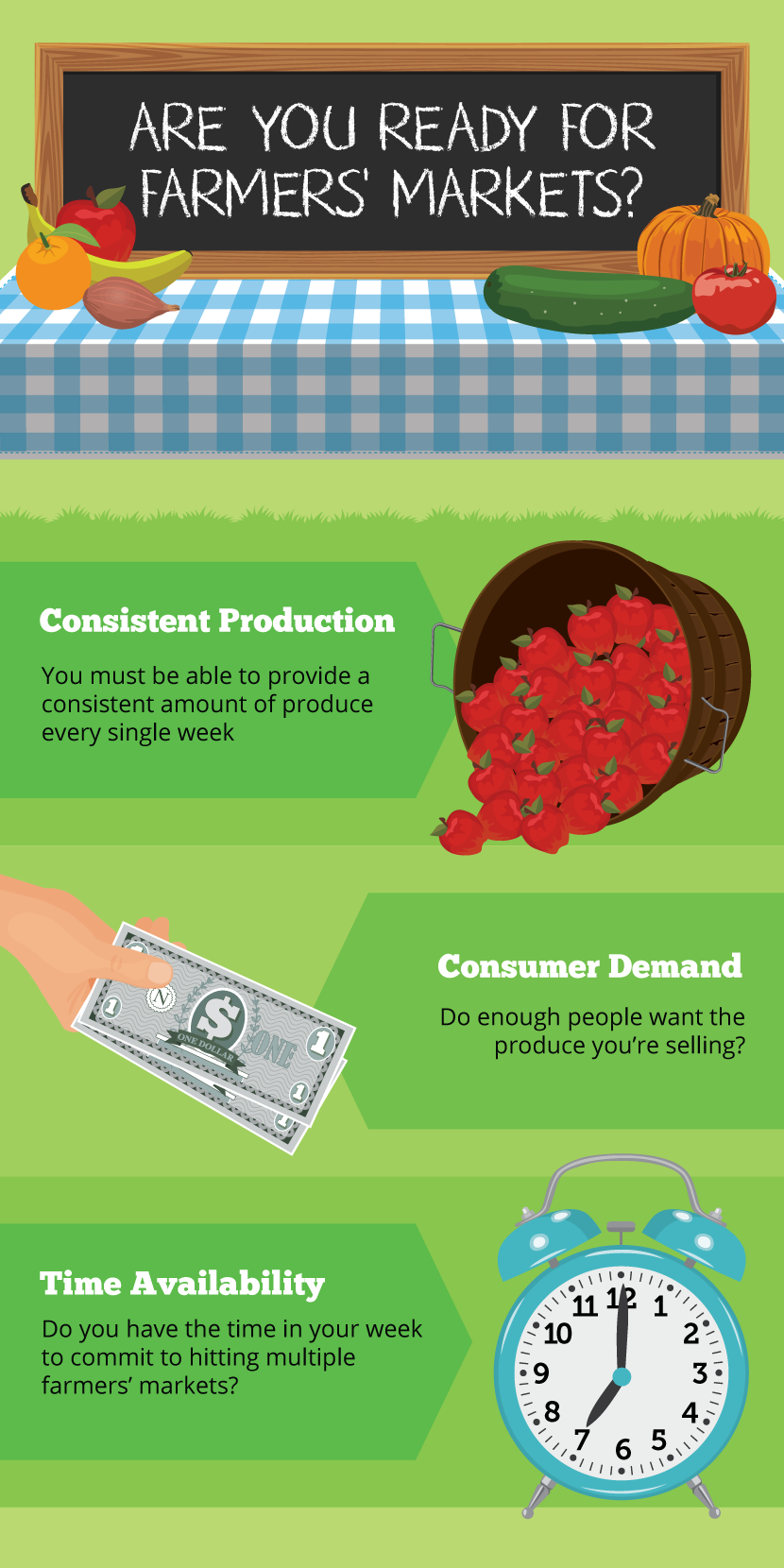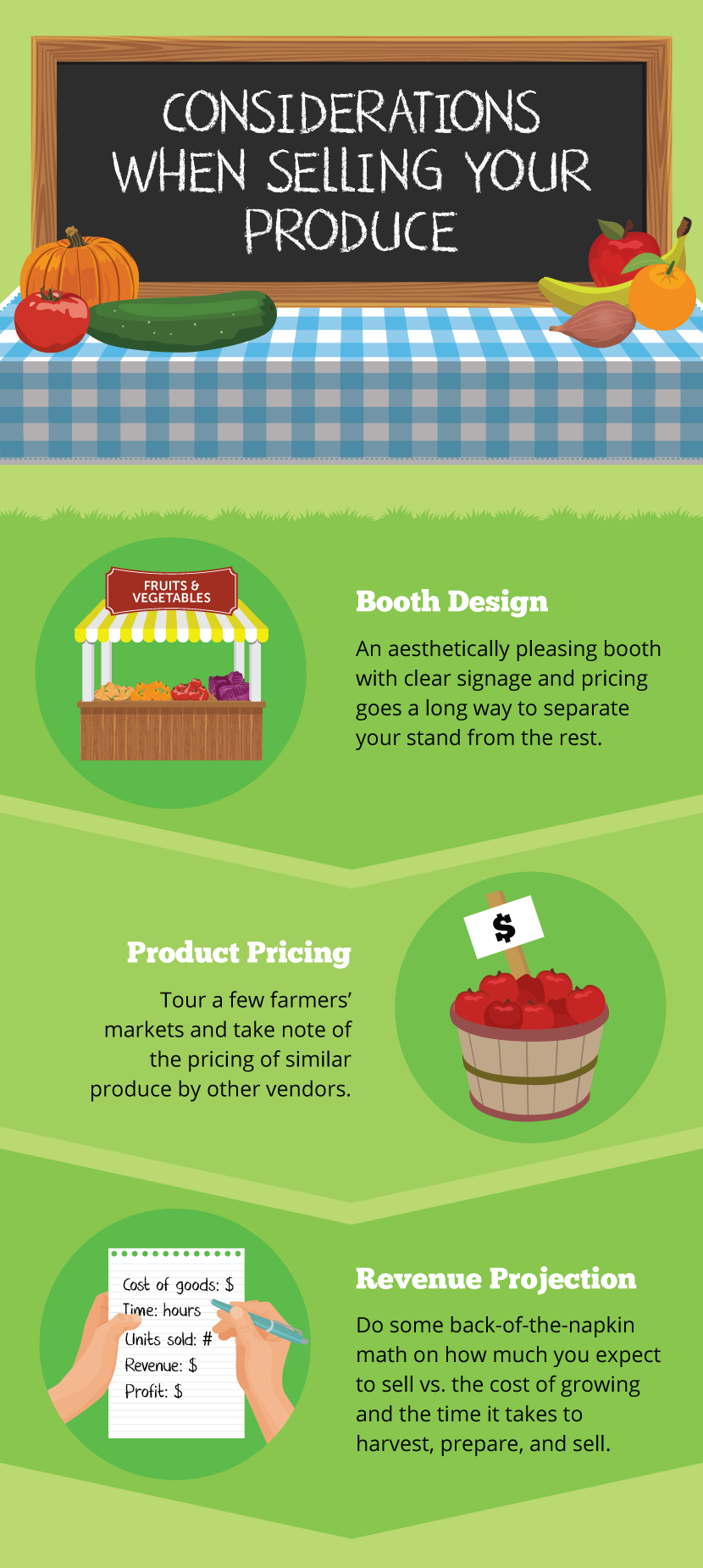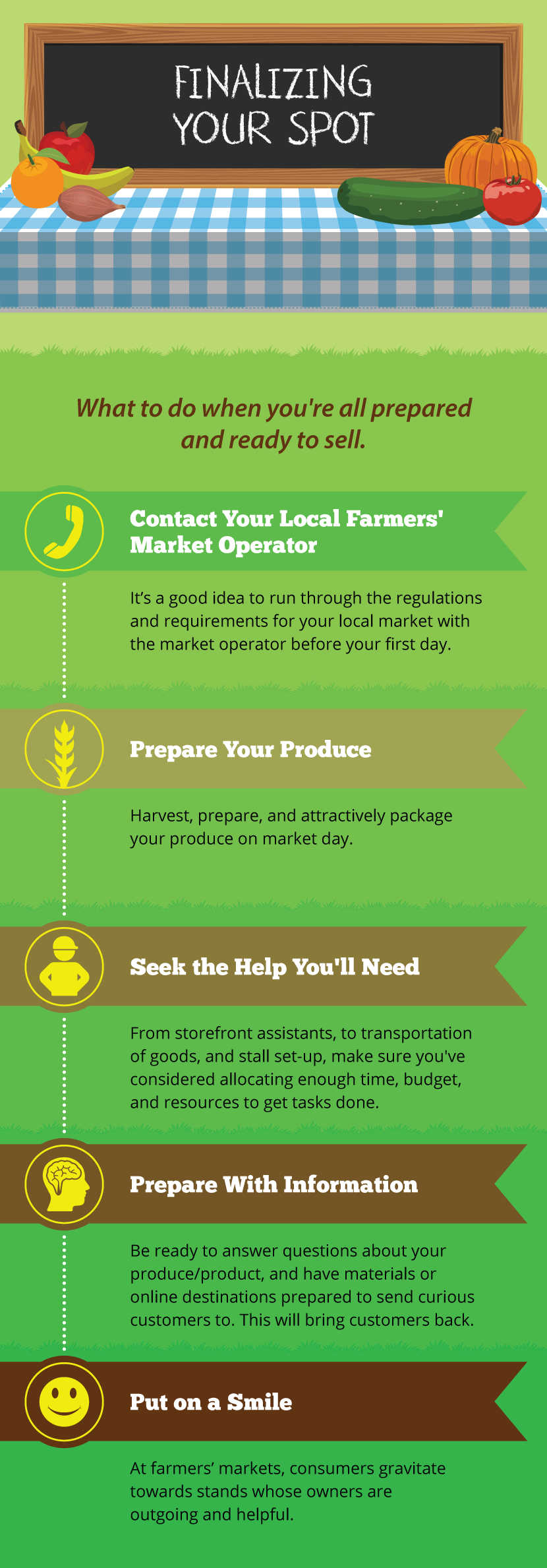To Market:
Taking Your Crops to a Larger Scale
It’s safe to say that local produce is here to stay. Farmers' markets are on the rise in cities all around the country,
providing a wonderful platform for farmers and customers to connect.
For farmers who have yet to tap into the farmers' market ecosystem,
it can be a bit daunting to know how to begin. What are the rules and regulations?
How do you decide how to price your produce? How much money can you actually make?
We dive into all of these questions (and more) in this article designed to get you from never having sold produce to
having your very first farmers' market stand.

Before we get into the “how to” of farmers' markets, it’s important to sit down and decide if opening a market stand actually makes sense for you and your farm. There are a number of factors to consider:
Consistent Production
Opening a market stand comes with a set of expectations from your customers.
They expect you to have a consistent supply of produce, week after week.
Of course, this selection can change based on the season,
but you don’t want to come with half as much produce as last week simply because you didn’t plant enough
the month before.
If you can’t commit to producing a standard amount of produce, harvesting it,
and bringing it to market, it may be too early in your farming career to consider a market stand.
Consumer Demand
The next step is to analyze the produce that you grow. Do enough people want to buy it? If you’re growing rarer, heirloom varieties that not many people have heard of, you may find them harder to sell at market.
The simplest way to figure out if your produce will sell is to tour farmers' markets in your area and
look at existing booths. Are they selling similar produce? If you see others selling what you’re growing,
that’s a great sign.
Time Availability
It’s no secret that farming is a notoriously time-intensive career.
If you’re still figuring out how to streamline your operations on the farm and are spending all of your waking time on
farming-related activities, you may not have enough time in the week to commit to a farmers' market stand.

If you’ve answered the questions above and decided that opening a farmers' market stand is the right call,
congratulations! But the work isn’t over – it’s only just begun.
There are a few vital considerations that you must make before you even get to your first market day:
Booth Design
The simple truth is this: most farmers' market stands are unattractive.
It’s no surprise that customers are drawn to well-organized booths with good signage and clear pricing.
Take the time to design a booth that will stand out. The best way to do this is to walk around local markets and take notes on booths that catch your eye. Jot down the factors that make each booth stand out so you can incorporate them into your own design.
Product Pricing
It’s easy to misprice produce the first time you sell it directly to customers.
This can lead to either massively undercutting other suppliers and selling out too fast (but not making much money),
or charging too much and sitting at the market twiddling your thumbs while other suppliers sell out of the same produce.
Again, doing market research by jotting down the prices that other farmers are selling similar produce
for is the best way to set your initial prices. You can always adjust as you gain more experience.
Revenue Projection
Before you even open your stand on your first day at market, you should have some idea how much money you’ll make.
Do some rough calculations based on how much time it takes for you to harvest, prepare, package,
and sell the produce vs. how many units you expect to sell.
Play around a bit with different pricing schemes and packaging.
For example, you could sell garlic by the head, or in bunches of three for $5.
You might find that bundling produce together sells more at a higher price!

At this point, you should be ready for your first market day.
It can be a bit nerve-racking to stand face-to-face with potential customers and try to sell your produce.
As farmers, we’re often more comfortable in the dirt working on our farms than in front of people trying to hawk our
wares. Here are a few tips to make your first day at market a success:
Contact Your Local Farmers' Market Operator
Becoming good friends with the market operators in your area is never a bad idea.
They’ll clue you in to produce that’s in high demand, allowing you to get an edge over other suppliers.
They’ll also let you know all the rules and regulations to follow.
These may seem arbitrary, but following them to the letter will keep you in a market operator’s good graces and
ensure that you have a booth for many years to come.
Prepare Your Produce and Booth
Although a farmer’s day always starts early, market days can be especially early.
Make sure to get up and harvest, prepare, and package your produce well in advance of when you have to get to market.
Calculate how long you’ll be at market and package produce in a way that will keep it fresh and crisp the entire time you’re there.
There’s nothing worse than having leafy greens wilt and kill any chance at making a sale.
Arrive early and begin setting up your booth.
Make sure to look at it from the perspective of a customer to see if anything looks out of place.
Put on a Smile
At farmers' markets, you’ll often be selling produce that’s either similar or equal to other farmers'.
You may despair at this fact and wonder how you can differentiate yourself if your produce is exactly the same.
The answer is simple: your personality and unique story are your biggest assets.
It’s not uncommon to see a booth with poor signage staffed by a farmer sitting in a chair and looking at their phone.
Do not be this farmer!
Greet everyone who passes by your booth, offer samples, and, most importantly, share your story!
Customers buy local because they want to feel connected to the food that they’re eating.
Give them that connection by telling them the story of your farm, how you grow food,
and what you love so much about the job.
You’d be surprised how far this little tip goes to converting more farmers' market attendees into loyal customers of your
farm.
Embed the article on your site

